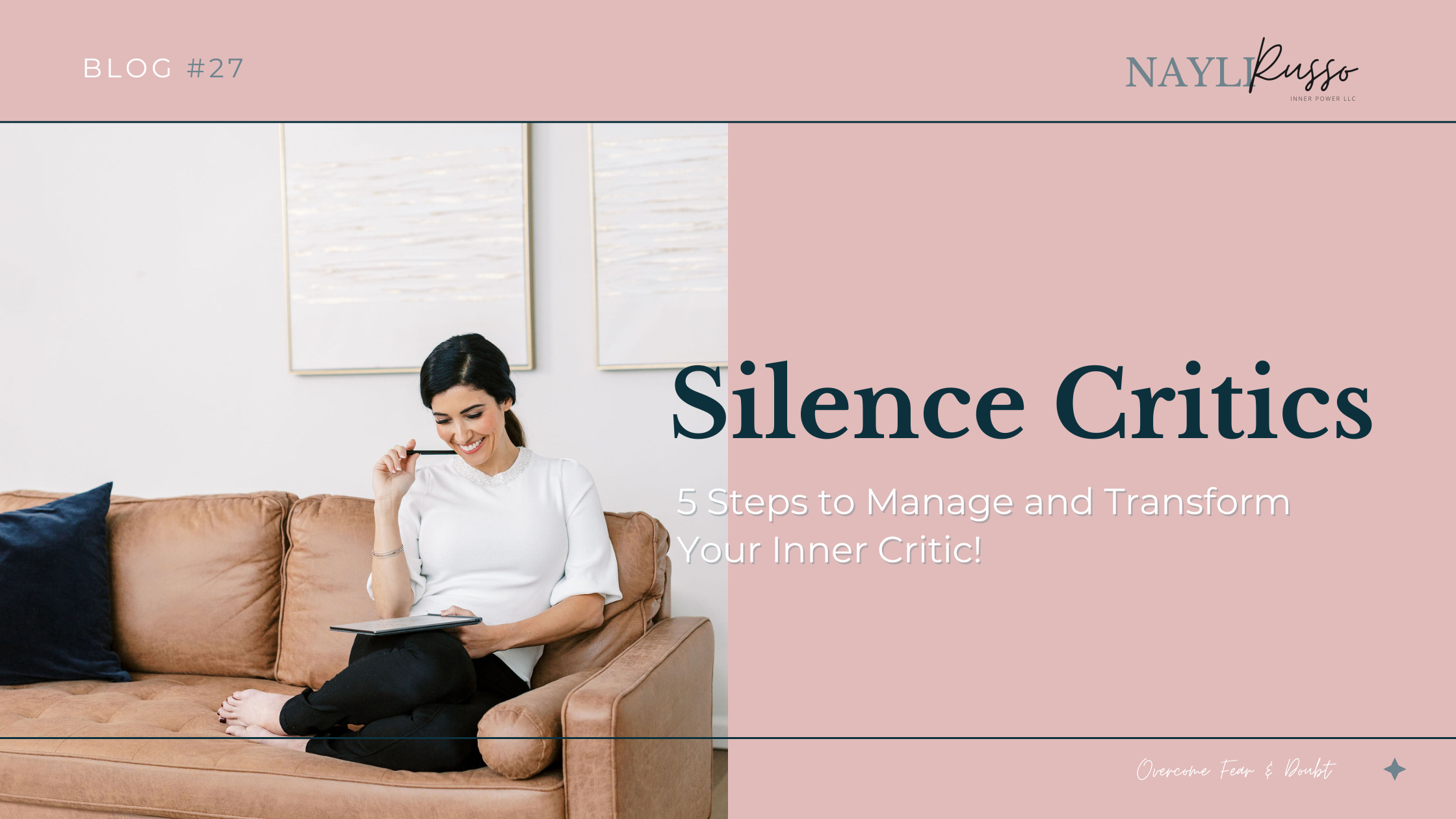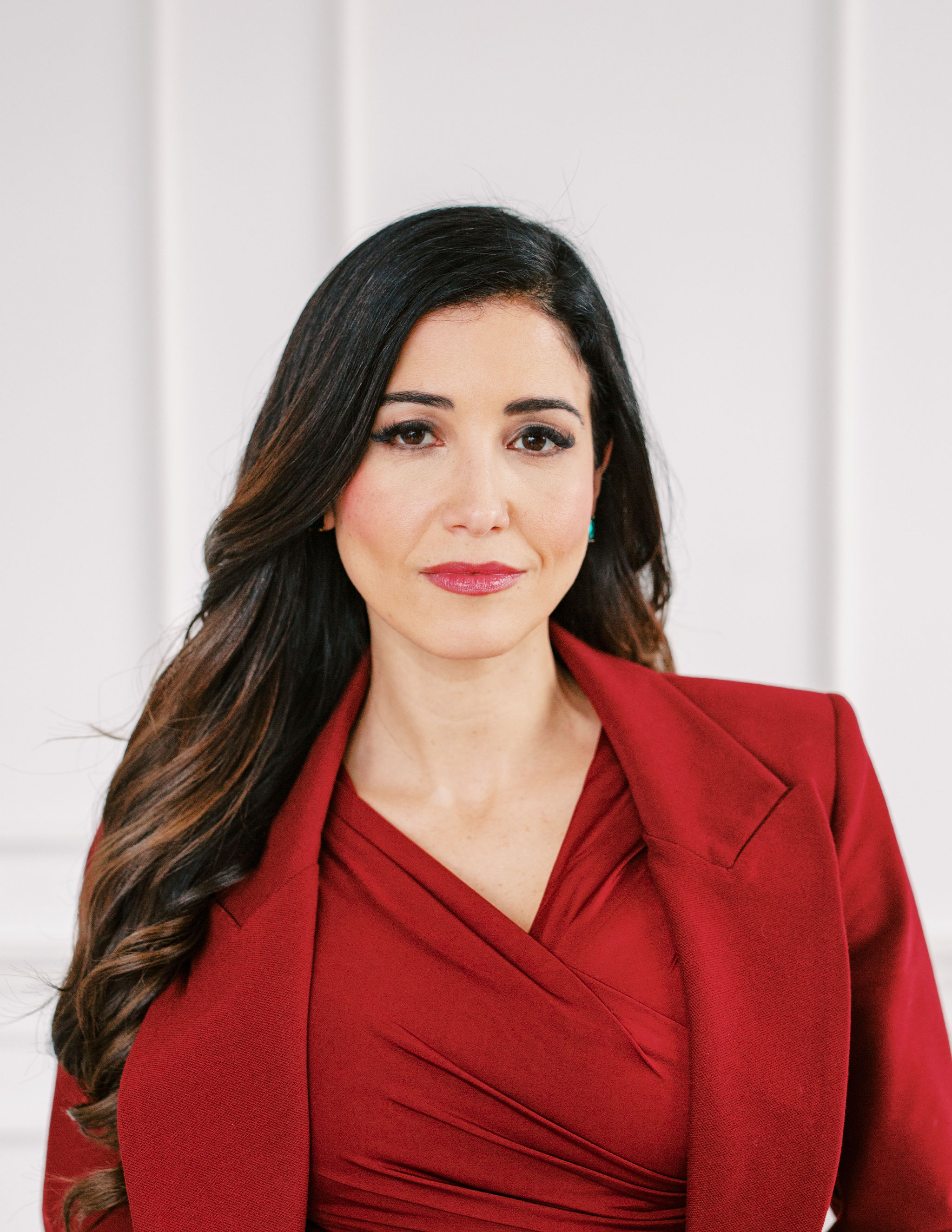
5 Steps to Manage your Inner Critic
Last week I introduced the 4Ps of self-confidence - perspective, position, plan, and performance.
While all four elements of my formula are critical to achieving self-confidence, success, and fulfillment, the most important (and the hardest to master) is perspective.
Perspective refers to the way we see the world. It comes from the personal points of view we have developed through our lived experiences. To quote Steve Covey, "We see the world, not as it is, but as we are or, as we are conditioned to see it."
When we lack self-confidence, our perspective is based on fear and doubts. We have allowed all the negative comments, failures, challenging moments, and heartaches to dominate our thoughts, internalizing them as our identity. That 'identity' shows up in our heads as a pestilent voice that warns us and reminds us of all our perceived flaws, mistakes, disappointments, and failures. We call that voice the "inner critic."
Our inner critic constantly evaluates our behavior and tells us believable lies that lead to perpetual self-judgment and self-doubt, further eroding our confidence. I know I have been a victim of my inner critic many times. My annoying voice, which I call "Tatiana," always reminds me that English is my second language and I am not good at it. Even as I write this, Tatiana is screaming at me, telling me that I am not a good writer and should not put myself out there, open to criticism.
While our inner voice is instrumental in keeping us safe, it does not serve us well if we let it dominate us and run our thoughts and actions. It is also not helpful if the tone and words it chooses are harsh, harmful, and shameful. A good question to reflect on: would you talk to a friend the way you speak to yourself? If not, then it's time for a change.
Here are 5 steps you can take to help you manage your inner critic.
1) Be aware of your inner critic. The first step in changing your inner dialog is to be aware of its presence and acknowledge its existence. For the next week, I want you to pay attention to every thought that crosses your mind. Pay close attention to moments of stress; when you are about to take a risk, when you are dealing with a big project, or when you are around someone that makes you nervous. Observe the inner critic and take note of where the voice is coming from, what it sounds like, and what type of words it uses.
2) Write a letter to yourself from the Inner Critic. Now that you are aware of the existence of the inner critic, I want you to understand that those thoughts are not you, and they do not represent reality. They are simply a perspective you adopted at some point in your life. To help you disassociate from the thoughts, I want you to give your inner critic a name and write a letter from the inner critic to yourself. Write the letter in the second person (using 'you' statements). Do not hold back; write everything your inner critic says to you regularly.
3) Write a response letter to your inner critic. Once you know everything your inner critic likes to say to you, I want you to respond to it from a compassionate and caring point of view, just like you would respond to a friend who is telling you all those things about themselves. Write your responses in the first person (using "I" statements). Please appreciate the inner critic for trying to protect you and keep you safe, but also distinguish which of its messages you choose to listen to and which are no longer helpful. Find a way to make peace with your inner critic and acknowledge your continuing, maturing relationship.
4) Identify ways to distance yourself from your "Inner Critic" To ensure you do not believe all the lies your inner critic loves to tell you, it is essential that you find ways to disengage from it. Harper and Lubar, in their book leadership presence, list seven ways to dissociate from the inner critic. My favorite three are:
Humor. Exaggerate the claims of your inner critic and make them outlandish and funny. Give it a funny voice or name, and make it sound so ridiculous that you cannot take it seriously.
Acceptance. No one is perfect; we all make mistakes and have perceived flaws. Thank your inner critic for all the valuable feedback, take what is worth acting on, and leave the rest behind.
Intention. Focus on your goals and the reasons you are taking action. When we have clarity of what we want, it's easier to push forward despite our self-criticism. (This is the 3rd P of my model: Plan)
5) Anticipate events or situations where your inner critic will show up. Your inner critic has triggers and will show up even when you have done a lot of work to keep it at bay. Consider situations where your inner critic will most likely appear, and use these exercises to prepare for it. Write down all the things that trigger your inner critic. For example, when I was six years old, I went to a singing audition that I did not get. The person that judged me was sitting at the head of a massive mahogany conference table. To this day, when I walk into a conference room, if a male is sitting at the head of the table, I panic, and my inner critic shows up loud and strong.
Developing a healthy self-perspective takes time and practice, but it is achievable. If you want to change the results you see in your life, you must start by changing the thoughts dominating your mind. All it takes is a conscious effort, patience, empathy, and self-compassion.
Please do not put off completing the exercises in this article. Even if you believe you do not need to improve your confidence, I assure you that being aware of your inner critic will enhance your life and bring you greater success.

